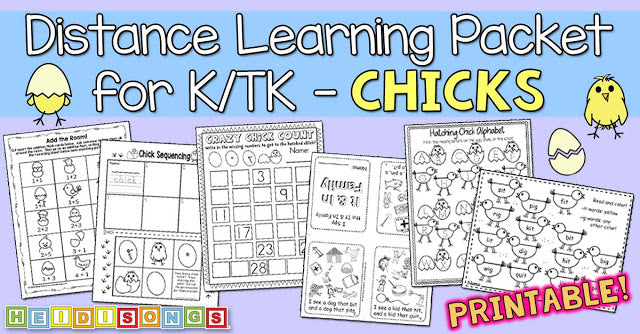


Parents, have you ever sat through a parent conference and left even more confused than when you arrived? Then this guide is for you! This guide will explain in plain, everyday English all of that educational jargon that your child’s teacher may be using that you might not be familiar with.
Part 1: General Terms

The Common Core State Standards
This is a set of uniform or common standards, (or goals) for each grade level that 46 out of 50 states have voluntarily adopted for their schools. It was not an initiative by the federal government, but an idea driven by a group of state governors that saw the need for a common set of learning goals for the children across the nation. The Common Core State Standards, or CCSS, are now causing schools to rewrite and implement a brand new curriculum in every grade level. Many states are finding this to be more costly than expected, and some are now trying to get their legislature to reject it. The other problem with the CCSS is that it was designed with the expectation that all students would be prepared for college, so the standards can be quite rigorous and many educators feel that they are not developmentally appropriate for young children.

Developmentally Appropriate Instruction
Developmentally Appropriate Instruction, or DAI, is teaching that matches the developmental stage of the brains of the students that the teacher is teaching. For example, requiring that preschoolers learn algebra or to write a five page essay would not be developmentally appropriate instruction. Most early childhood educators with even just a little experience have a pretty good idea of what their students can comprehend and what they can handle, and what is not DAI.
Developmental Readiness (AKA, “Your child is not ready to learn this concept.”)
When a teacher says that your child is not “ready” or “developmentally ready” to learn a certain concept, this means that the child’s brain has not yet developed to the point when it can actually do that task. It does not mean that your child is lazy, stupid, incapable, not as smart as the other children, or that you are a poor parent. It does not mean that your child will never learn that skill! It just means that your child’s brain is still on the road to getting there.
Children’s brains grow and develop at different rates, so some children master certain skills, such as rhyme, when they are four years old, and others master them when they are six. When a young child has had lots of time and plenty of practice to learn a skill, and still can’t quite do it, then very often it’s a matter of developmental readiness rather than intelligence or even the quality of teaching that makes the difference. But once the parents and teacher lay the foundation, the day will come when the child will understand and it will all make perfect sense! That’s the difference between a child that is “ready to learn” and one that is not.
Learning Disability
When a child is having trouble learning a in a certain subject but is doing fine in other areas, sometimes a learning disability is diagnosed. This does not mean that the child is not intelligent; in fact, children cannot qualify for help as learning disabled unless the school can prove that the child has at least normal intelligence in one area (minimum) and therefore has the ability to learn. If the child’s IQ is very low and his or her achievement is about what is expected for his ability level, then no extra help will be given. There must be a discrepancy (or difference) between how the child is doing in school and the child’s ability level or IQ. If there is a wide enough discrepancy or difference, the child may be placed in a special education class for part or all of the day, but only with parent permission. Usually at least a two year discrepancy is required or no help will be given. So a child must often be VERY far behind in order to get any help.
Speech and Language Services (“Your child qualifies for Speech and Language Services”)
Children that qualify for speech and language services often need it based on the fact that they are making many sounds poorly or unclearly, which is articulation. The speech teacher will try to teach them what to do with their mouth and tongue in order to speak more clearly.
Other children need speech services because they are not developing language or the structure of the English language at a rate that is considered normal in comparison to their peers. (Example, if the child says, “I potty” rather than, “I need to go potty,” or “I sad” rather than “I am sad” even by the age of five, then he or she will likely qualify for Speech and Language Services, but under the umbrella of Language rather than articulation, which is just unclear speech.
So, at a certain age, children should be speaking in complete sentences (although short ones!) and making certain sounds clearly. (For more information, see this chart here.) If they are not, they should be checked. Parents can take their children to their local school district when they turn three years old and ask for a FREE speech and language assessment (test). School districts must test preschool aged children at parent request within a reasonable amount of time and then place the child in a class or offer whatever services are needed if the child qualifies. Sometimes this means free, high quality preschool, right there on school grounds! So if you suspect your child has a problem, or if people generally don’t understand your child, consider having your child tested.
Keep in mind that after your child enters Kindergarten, the school is under no obligation under the law to give your child any special education tests at parent requests. This only holds true for preschool aged children! So it is important to get your child down for testing EARLY if suspect any kind of problem. Remember, early intervention is the key to fixing most problems.
Special Education
Children who are diagnosed with learning disabilities, but who are shown to have the potential to learn (as described above) may be placed in special education classes, such as a Speech and Language Resource-Specialist Program (usually just an hour or two a day) or a Special Day Class (usually all day). There are also special education classes for children with autism, communication difficulties, and developmental delays such as Down’s Syndrome, etc. Parents, be careful what you sign off on as far as special education services are concerned if your child is attending a school outside the attendance boundaries of where you live, because schools are not required to serve learning disabled children that do not live within their attendance area. For example, if I live in the Bronx but currently take my child to a school in Manhattan, and my child is diagnosed with a learning disability, once I sign that IEP the Manhattan school can send me back to the school in the Bronx if they want to. (This is at least the way it is where I live in California, so I suggest that if this is an issue for you, contact your state department of education to find out the TRUTH of the situation before you sign anything.)
Individual Education Plan, IEP
An IEP is an Individual Education Plan that is written when a child qualifies for Special Education. It is a legal document that must be followed and should be presented on day one to any new school that your child switches to. Be aware that many private schools do not provide services to children that require special education services, since they are staffed only to provide for the needs of the many rather than the few.
Come back next week for Parts II & III of Confused by Educational Jargon? A Guide to Understanding Your Young Child’s Teacher. In the meantime, if there’s an educational term that you hear a lot but are not sure about, please leave a comment below and I will add it to the list!
———————————-
Follow me! Did you enjoy this post? Do me a favor and share it with your friends! And follow this blog by signing up email updates, or follow on Bloglovin’, or follow me on TPT! I’m also on Pinterest, Facebook, Twitter, Instagram, Google+ and YouTube, too! Don’t forget to sign up for our email newsletter (on the left sidebar) for special deals and promo codes that you won’t find out about anywhere else.
















